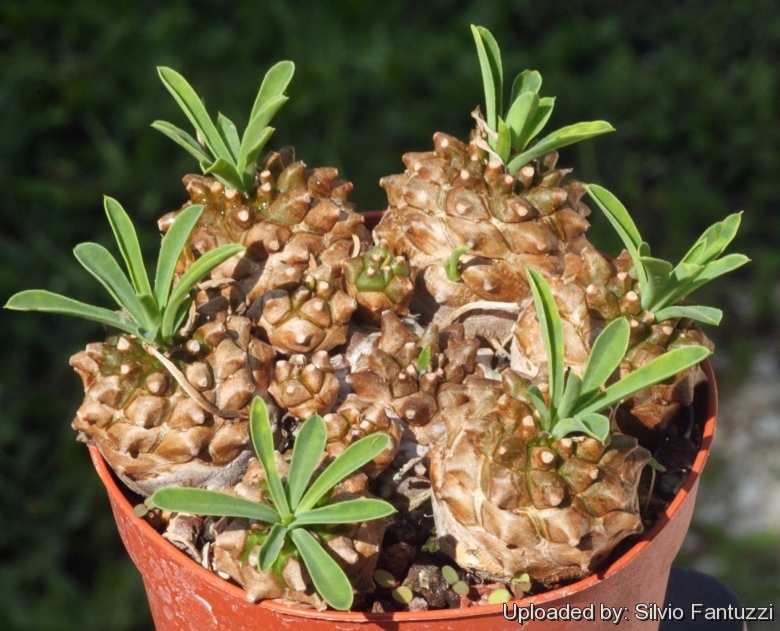
Euphorbia cv. Cocklebur Photo by: Silvio Fantuzzi
Origin and Habitat: Garden origin (hybrid), but quite common in cultivation.
Synonyms:
Common Names include:
ENGLISH: Pineapple, Cocklebur
Description: Euphorbia cv. CockleburSN|17510]]SN|14662]], more commonly know as Euphorbia x japonicaSN|15988]]SN|27849]], is a dwarf interesting hybrid involving Euphorbia susannaeSN|27849]]SN|15988]] and Euphorbia bupleurifoliaSN|14662]]SN|17510]]. It has a thickened root merging into a short caudex partly underground with several ananas-like branches arising from the crown. It shows intermediate characteristic from both the parents.
Roots: Strong napiform (turnip-like).
Branches: Spherical 2-5 cm long and 4 cm in diameter pine-cone-like with a geometrically-neat tubercled surface, the tubercles (tuberculiform corky scars occasioned by falling away of the old leaves) are prominent olive-green to dark reddish-brown up to 3 mm hight and crowded spiral series imbilicated in the centre giving a reticulate appearance to the surface. The crown is slightly depressed
Leaves: Deciduous borne in wet season and falling in the dry season, lanceolate, erecto-patent, willow -like, narrow or large, in dens tufts on the stems apex, 3-5 cm long by about 5-7 mm, not succulent, light green, making it look like a palm tree or a pineapple.
Leaves: Green leaves to 1 cm long in branch apices.
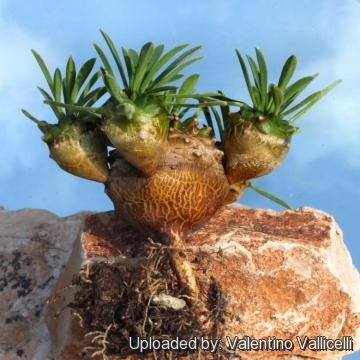 Euphorbia cv. Cocklebur Photo by: Valentino Vallicelli
Euphorbia cv. Cocklebur Photo by: Valentino Vallicelli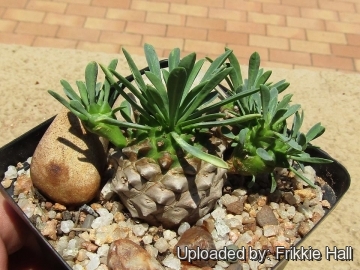 Euphorbia cv. Cocklebur Photo by: Frikkie Hall
Euphorbia cv. Cocklebur Photo by: Frikkie Hall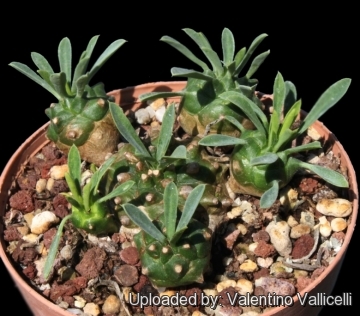 Euphorbia cv. Cocklebur Photo by: Valentino Vallicelli
Euphorbia cv. Cocklebur Photo by: Valentino Vallicelli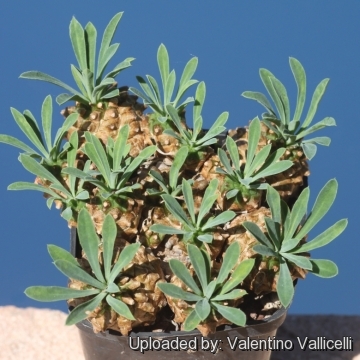 Euphorbia cv. Cocklebur Photo by: Valentino Vallicelli
Euphorbia cv. Cocklebur Photo by: Valentino Vallicelli - Dwarf Euphorbia with short finger-like branches arising from the crown of the sunken stem. Head to 9 cm in diameter plus the arms. Photo by: Valentino Vallicelli
- Dwarf Euphorbia with short finger-like branches arising from the crown of the sunken stem. Head to 9 cm in diameter plus the arms. Photo by: Valentino Vallicelli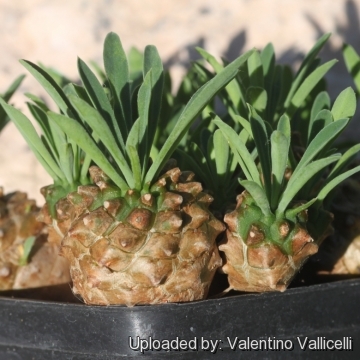 Euphorbia cv. Cocklebur Photo by: Valentino Vallicelli
Euphorbia cv. Cocklebur Photo by: Valentino Vallicelli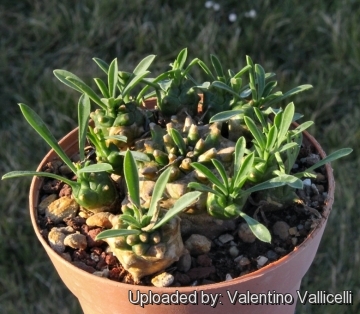 Euphorbia cv. Cocklebur Photo by: Valentino Vallicelli
Euphorbia cv. Cocklebur Photo by: Valentino Vallicelli Euphorbia cv. Cocklebur Photo by: Giuseppe Distefano
Euphorbia cv. Cocklebur Photo by: Giuseppe DistefanoCultivation and Propagation: Euphorbia cv. Cocklebur (Euphorbia x japonica) pretty easy to grow.
Growth rate: This is a small, slow-growing choice Euphorbia. It is suitable as a container plant (but it can grow in the ground in areas with a mild climate).
Soil: It grows well in a very draining mineral potting substrate.
Moisture: It does not like its compost drying out for very long periods when the weather is hot. It needs constant moisture during the Summer, but it doesn't like winter water, as it rots easily.
Hardiness: It needs to be kept warm, not less than 10 C in the winter (but when dormant and dry they are relatively cold tolerant).
Sun Exposure: Light shade.
Warning: The latex of the Euphorbia is highly poisonous and can be very dangerous.
Propagation: Usually by cuttings.
Your Photos
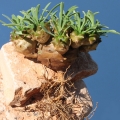
by Valentino Vallicelli



















